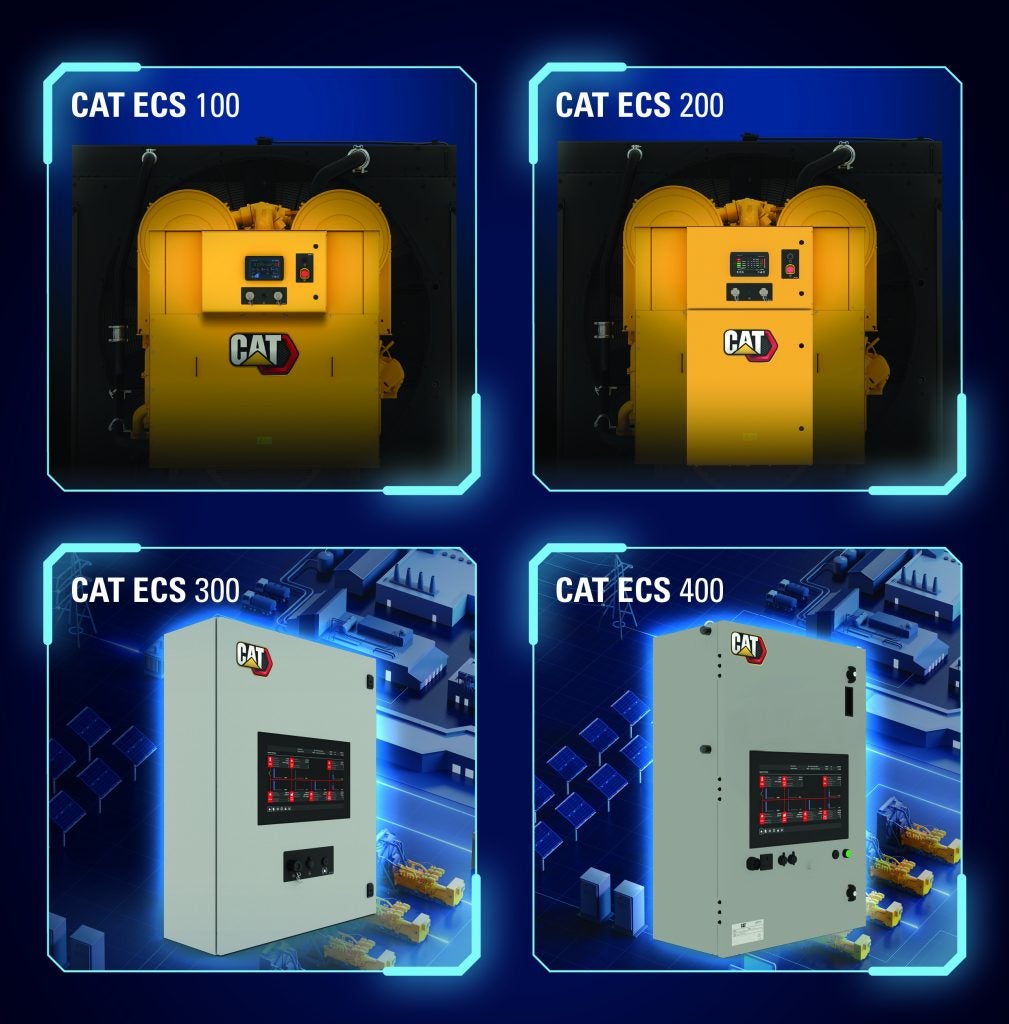Caterpillar reveals two control systems to manage multiple power generation

Industrial goods and machinery company Caterpillar has announced the launch of two advanced energy control systems (ECS) that will “seamlessly integrate with sites using singular or multiple power generation assets such as generator sets, battery energy storage and renewable energy sources”.
The systems – the Cat ECS 300 and Cat ECS 400 – have been designed to deliver reliable power and enhance energy efficiency, according to a statement from the US-based company, and “allow customers to optimise their energy management and achieve energy cost savings”.
An ECS is a (usually fully automated) system that manages and optimises the use of energy within a building, facility or local area. It monitors and controls energy-consuming equipment such as heating, ventilation and air conditioning, lighting, and other systems to reduce energy consumption and improve overall efficiency.
ECS technologies have gained traction in recent years for their potential role in the growth of microgrids.
According to 2024 research from GlobalData, Power Technology’s parent company, “by generating electricity closer to end-users, energy losses associated with long-distance transmission can be reduced. Additionally, distributed generation can contribute to grid stability during peak demand periods by providing supplementary power where it is most needed”.
The research, titled Distributed Power Generation, also revealed that the global microgrid market registered a market value of $28.86bn in 2022 and is estimated to reach $60.61bn by 2027.
“The demand for the microgrid market is anticipated to grow significantly in the coming years,” added the report, “due to the increasing demand for reliable and sustainable energy, the rising need for energy security and the growing adoption of renewable energy sources.”
The Cat ECS 300 features mains/utility paralleling, allowing customers to monitor and control up to four power generation assets concurrently, with or without the utility.
This means customers can use their on-site power generation assets more effectively, such as during high energy consumption hours, said Caterpillar, thus delivering energy savings.
The ECS 300 also offers closed transition with soft load/unload or open transition with mains/utility operation for emergency standby, providing reliable backup power in the event of a grid failure.

The Cat ECS 400 is engineered for advanced microgrid solutions, with the capability to monitor and control up to 32 power generation assets. Credit: Caterpillar.
Melissa Busen, senior vice-president, Caterpillar Electric Power Division, said: “As the energy landscape evolves and energy needs become more complex, customers are developing plans to secure power for both the near-term and the future.”
This system not only “enables customers to expand their existing sites by managing additional power generation assets but also helps maximise the use of renewable energy sources, leading to reduced fuel consumption and overall lower energy costs”, added the Caterpillar statement.
The new controllers join two existing Cat ECS systems, the Cat ECS 100 and Cat ECS 200, on the market. The Cat ECS 100 delivers a control system for new standby, fast-response and prime power generator sets.
power-technology





